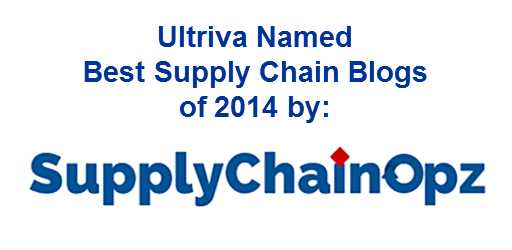After five years of anemic economic recovery, manufacturers continue to add inventory to their books much faster than GDP growth. In order to better manage inventory levels while still ensuring the right part is in the right place at the right time, manufacturers are increasingly relying on advanced information management solutions, according to a survey released by PwC US in collaboration with Manufacturers Alliance for Productivity and Innovation (MAPI).
Further, inventory turns – which indicate whether the supply chain is getting more efficient at moving goods from suppliers to customers – have declined steadily since 2011. PwC and MAPI surveyed senior executives from 75 global manufacturers (with U.S. headquarters) to better understand this decline in inventory performance and polled respondents on the effectiveness and benefits of using advanced inventory data management strategies to reduce inventory.
“Inventory is often considered by manufacturers to be the most valuable category of assets on their books; however, it can tie up large amounts of cash and diminish in value for a host of reasons,” said Stephen Pillsbury, principal in PwC’s U.S. industrial products practice. “As a result, it has become common practice for manufacturers to minimize inventory as much as possible without hurting customer service levels. While they continue to focus on managing inventory, they seem to have reached a point of diminishing returns and are now turning to advanced information management solutions to further reduce their inventory.”
Nandu Gopalun with Ultriva by Upland recently shared some of the benefits of effective real-time information management solutions. He noted, “Real-time information helps to ensure correct scheduling, planners and buyers to plan components accurately, and suppliers to react quickly to the changes”.
When it comes to enabling agility, responsiveness and operating flexibility, 37 percent of respondents reported that their core ERP system was either not very effective or ineffective. Conversely, the other respondents with effective ERP systems were quite bullish on the usefulness of their supply chain visibility (SCV) systems when it comes to replacing inventory and costs with actionable and timely data.
Interestingly, companies with ineffective ERP systems experienced an average annual margin erosion of 3.5 percent while those with effective systems in place experienced an average growth of 2 percent. Companies with both effective ERP and SCV systems had even higher margins at 2.4 percent. Put another way, we found a clear connection between strong margin performance and effective ERP implementations.
Gopalun noted that solutions like Ultriva by Upland are not in conflict with ERP solutions and in fact complements ERP.
In regards to inventory turns, almost half of those surveyed said their supply chain system was effective or very effective while one third said their system was not very effective or ineffective at replacing inventory and costs with actionable and timely data. When comparing the two groups, the companies with effective SVC systems outperformed the ineffective ones by 30 percent.
“Information management systems matter because they get the right information to the right place at the right time in order to improve effectiveness,” said Cam Mackey, SVP, Operations and Partnerships, MAPI. “To that end, many companies have invested a great deal of time and money implementing ERP and SVC systems. Together, these platforms can provide manufacturers with detailed information including orders, lead times, stock quantities and locations. Effectively integrating these information systems enables manufacturers to do a better job of synchronizing supplier deliveries with production schedules and customer orders, resulting in improved customer service and less overall inventory.”
Gopalun said, “In an effort to improve supply chain management, many companies are embracing SCV systems – enabling companies to track and manage raw materials, work-in-process, and finished goods across the extended supply chain. It reduces inventory across the supply chain, not only with in four walls of the plant but also with their suppliers and with their customers.
Of those surveyed, 70 percent reported having a SCV system in place.
As effective systems drive better margin growth and higher turns, companies are still experiencing inventory growth and supply chain issues. When asked about the factors having the biggest impact on supply chain visibility, uncertainty of supplier deliveries and unpredictable customer demand were among the responses most cited. While SCV systems are intended to link customer demand to production schedules and supplier orders/deliveries, respondents continue to cite problems with forecast accuracy.
Respondents also addressed their ability to maintain optimal inventory levels, listing lack of discipline in operating processes and practices, a high degree of product complexity or number of stock keeping units (SKUs), and poor forecasts from marketing/sales as having significant impact.
Many of the factors listed above are driven by management disciplines, not information systems. The management discipline that most strongly addresses these factors is integrated materials management (IMM), commonly enabled through sales, inventory, and operations planning. This discipline is focused on synchronizing sales forecasts with delivery commitments and material supplies and involves all of a company’s key functional stakeholders. According to Mackey, “While systems matter, the bottom line is that effective supply chain visibility all comes down to management discipline.”
“The single biggest driver of excess inventory and unreliable delivery performance is inadequate material management practices. While SCV systems can greatly enhance IMM they cannot replace disciplined review and approval by critical management stakeholders. To make this task easier and more effective requires buy-in and coordination across key functions in the organization – even with the best technology in the world, it still comes back to management discipline,” Pillsbury said.
Latest technologies like RFID’s help to improve efficiencies tremendously. The biggest challenge is bringing the discipline and cultural change to the organization. Many companies are now trying to achieve this through employee engagement programs and incentives. Which have proven quite effective.



